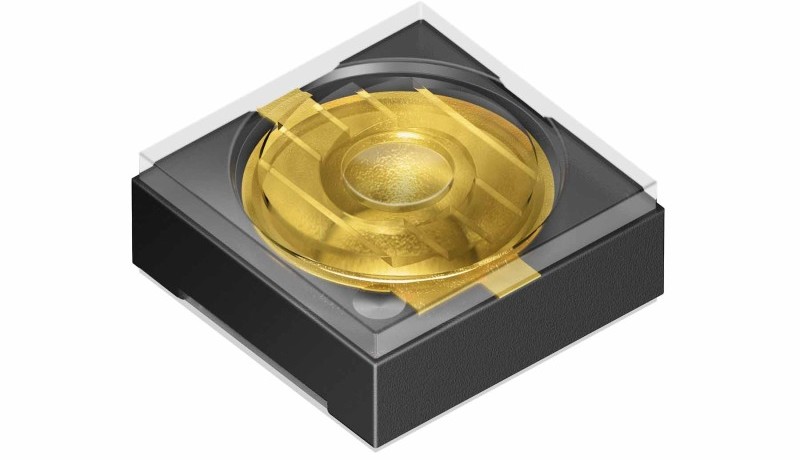New IR LED for iris scanners
December 25, 2015
on
on

Iris pattern scanning is regarded as one of the most reliable biometric methods for personal identification. This technology has recently been adopted in smartphones and tablets. In 2014 Osram Opto Semiconductors launched the Oslux SFH 4780S specifically for this application – the first IR LED that was small enough (2.4 mm high) and sufficiently reliable to be easily integrated into mobile devices. Now Osram has brought out a new version, the SFH 4786S, which is only 1.6 mm high and therefore also suitable for very thin devices.
The new SFH 4786S also has another special feature. It predecessor SFH 4780S was optimized for maximum light output, and the new version has an extra lens system that tilts the emitted light beam at an angle of 8 degrees to the vertical axis. This tilted emission pattern concentrates the light in the field of view of the iris camera, which it is always mounted slightly offset from the IR LED. That makes the performance of the overall system significantly better than with a LED that has a vertical emission pattern. Previously mechanical aids were used to get the right alignment. With the SFH 4786S they are no longer necessary, reducing the complexity of the complete system. In addition, the new IR LED has a somewhat broader emission angle of ±13 degrees to illuminate a larger area at the typical working distance of iris scanners.
The SFH 4786S emits IR light at a wavelength of 810 nm, the same as its predecessor. High-resolution images of all iris colors can be achieved in this spectral region. The chips have a nanostack structure with two emission centers per emitter, which maximizes the optical output.
The new SFH 4786S also has another special feature. It predecessor SFH 4780S was optimized for maximum light output, and the new version has an extra lens system that tilts the emitted light beam at an angle of 8 degrees to the vertical axis. This tilted emission pattern concentrates the light in the field of view of the iris camera, which it is always mounted slightly offset from the IR LED. That makes the performance of the overall system significantly better than with a LED that has a vertical emission pattern. Previously mechanical aids were used to get the right alignment. With the SFH 4786S they are no longer necessary, reducing the complexity of the complete system. In addition, the new IR LED has a somewhat broader emission angle of ±13 degrees to illuminate a larger area at the typical working distance of iris scanners.
The SFH 4786S emits IR light at a wavelength of 810 nm, the same as its predecessor. High-resolution images of all iris colors can be achieved in this spectral region. The chips have a nanostack structure with two emission centers per emitter, which maximizes the optical output.
Read full article
Hide full article


Discussion (0 comments)